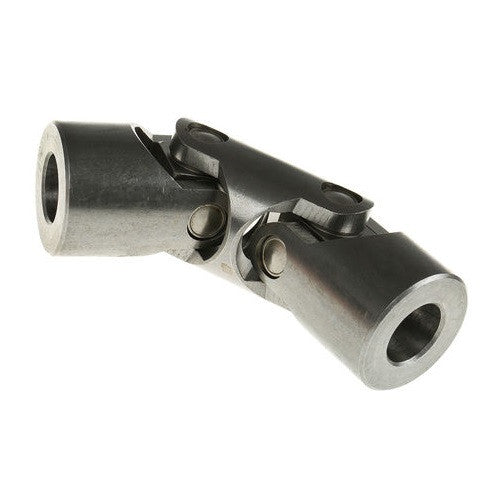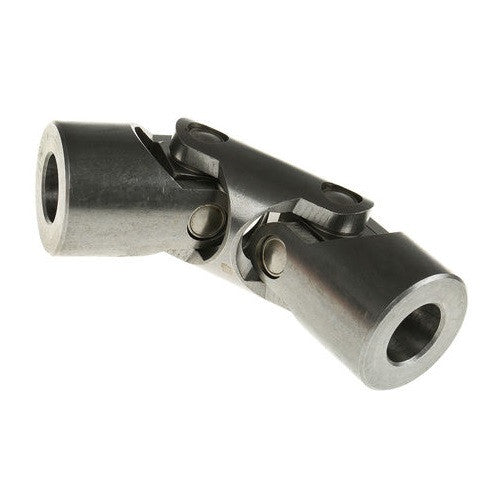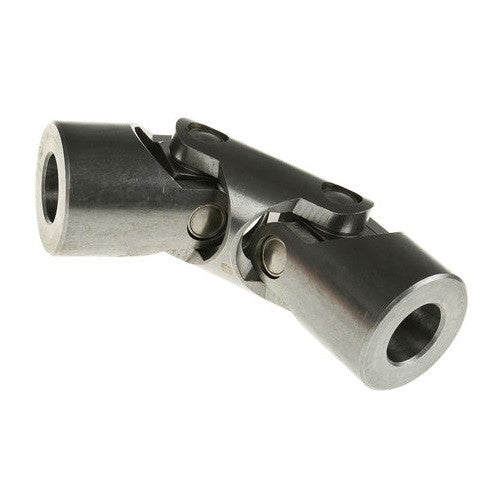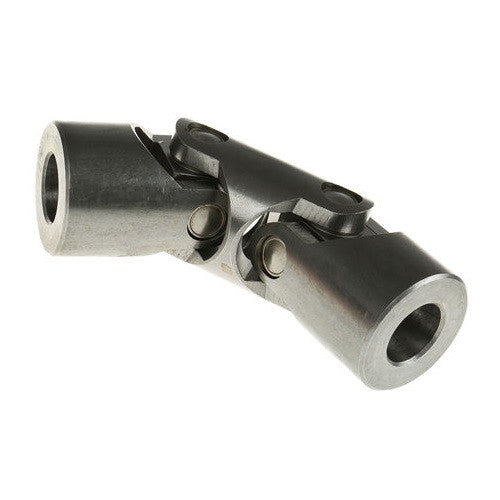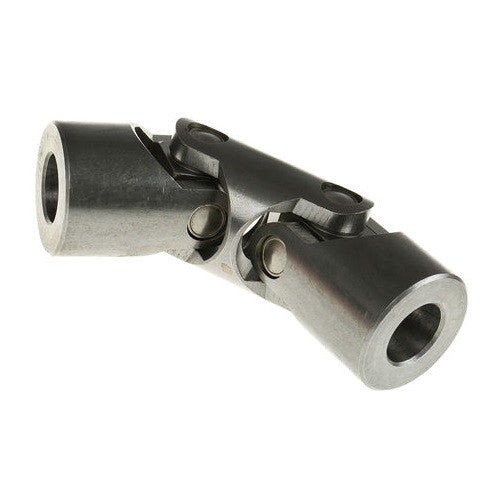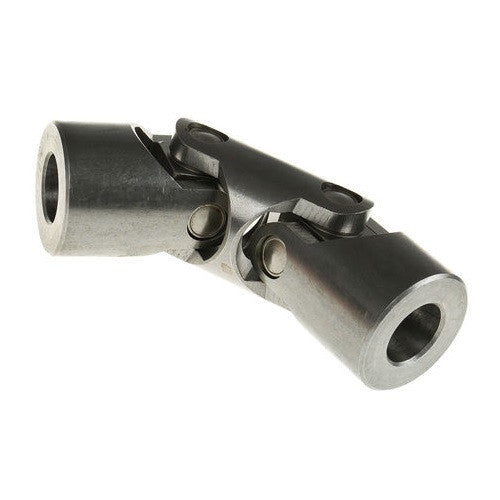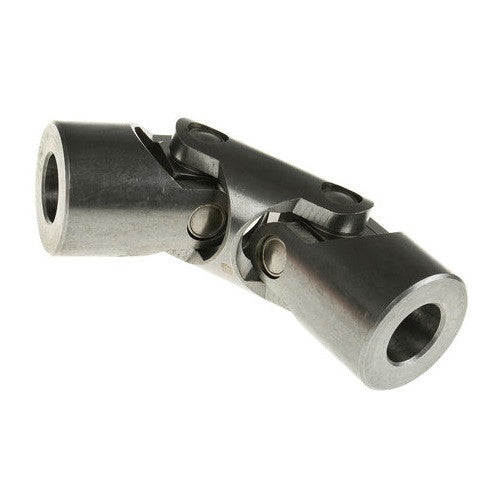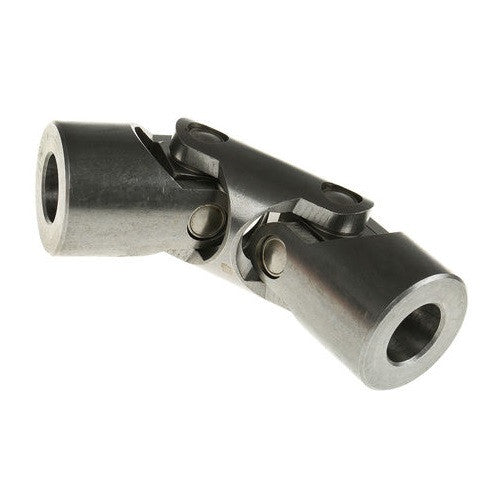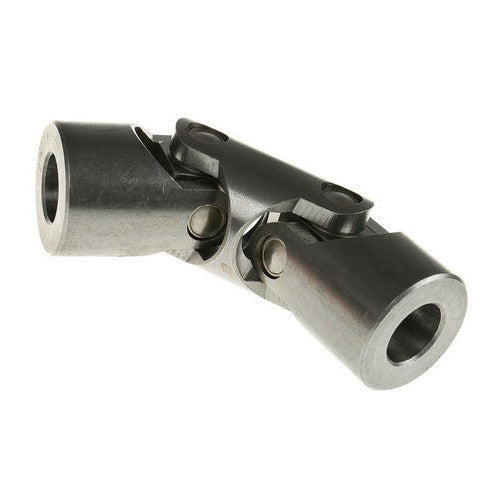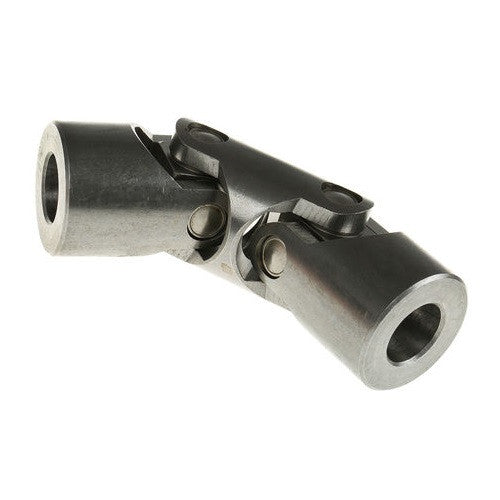Delay - All orders place will be processed from 02/01/2026
Universal Joints & Couplings – Reliable Power Transmission from the UK’s Trusted Supplier
On the hunt for dependable universal joints or U-Joint replacements? We provide an extensive variety of flexible couplings to ensure dependable torque transfer between your misaligned or shafts at an angle. Whether you’re looking for a single U-joint or a double universal joint, we have the replacement solution.
Our range is trusted within the automotive, agricultural, industrial and marine industries, and as such, we are the UKs one of the top universal joint suppliers.
What is a Universal Joint?
Universal joint A universal joint (universal coupling, U-joint, Cardan joint, Spicer or Hardy Spicer joint, or Hooke's joint) is a joint or coupling connecting rigid rods whose axes are inclined to each other, and is commonly used in shafts that transmit rotary motion. Universal joints Ideal for swinging the system to work at different angles and rotation angle, and can be used for power transmission with smooth operation.
Universal Joints We Offer:
Single Universal Joints
-
- Operate up to 45° angles
- Double-column guide-ways are also available with all-plain or needle roller bearings
- Common options also available are straight bore and tapered bores
- Alternate bores: hex, square, or D-shaped available upon request
Double Universal Joints
-
- Support 90° angular operation
- Provide homokinetic transmission, can effectively resist the tendency to rotate when such problems occur and eliminate the uneven wear.
- Space-saving design as a replacement for two single joints coupled in series
Stainless Steel U Joints
-
- Ideal for corrosion or sanitary conditions
- About The author: True flex Ballpoint Available as single or double jointed
- High torque, low backlash, and precision-engineered
How to Select the Proper Universal Joint Coupling
- For the high-torque, low-speed/frequent-reversing applications (up to 1000 RPM), try a plain bearing joint, ideal for shock loads and erratic movement.
- For high RPM, low torque applications (4000 RPM max.) select needle roller bearing U-joints - with it's smooth consistent rotary motion at up to 35° angle.
Need assistance with size or fit? Our support team is here to help you (if installed properly) for product selection and customization.
Applications of Our Universal Adapters
- Agricultural machinery
- Industrial automation
- Automotive drive shafts
- Gearboxes and motion-control systems
- Marine and Offshore equipment
Why Choose BEP Ltd?
- UK based universal joint supplier with vast in stock availability
- Trusted sourcing from leading suppliers
- Professional tech support and fast shipping
- Custom bore size and fitment options available
Frequently Asked Questions
Q1. What is the function of a universal joint?
A U-Joint enables transmission of rotary motion between shafts that are at an angle to each other.
Q2. What is the difference between single and double universal joints?
Single joints accommodate angles to 45° and double available to 90° with more torsional damping, non “homokinetic” motion.
Q3. Which is better, U-Joints with plain bearings or needle bearings?
Plain bearings work best with low speeds and high torque. High speed / low torque applications Needle bearings are ideal when high speed / low torque is needed.
Q4. Can you make a custom size bore or customize the shafts?
A. Yes we do offer upon request hex, square, and keyed bores. Custom universal joint needs, please contact us.
Universal Joints
Universal Joints & Couplings – Reliable Power Transmission from the UK’s Trusted Supplier
On the hunt for dependable universal joints or U-Joint replacements? We provide an extensive variety of flexible couplings to ensure dependable torque transfer between your misaligned or shafts at an angle. Whether you’re looking for a single U-joint or a double universal joint, we have the replacement solution.
Our range is trusted within the automotive, agricultural, industrial and marine industries, and as such, we are the UKs one of the top universal joint suppliers.
What is a Universal Joint?
Universal joint A universal joint (universal coupling, U-joint, Cardan joint, Spicer or Hardy Spicer joint, or Hooke's joint) is a joint or coupling connecting rigid rods whose axes are inclined to each other, and is commonly used in shafts that transmit rotary motion. Universal joints Ideal for swinging the system to work at different angles and rotation angle, and can be used for power transmission with smooth operation.
Universal Joints We Offer:
Single Universal Joints
-
- Operate up to 45° angles
- Double-column guide-ways are also available with all-plain or needle roller bearings
- Common options also available are straight bore and tapered bores
- Alternate bores: hex, square, or D-shaped available upon request
Double Universal Joints
-
- Support 90° angular operation
- Provide homokinetic transmission, can effectively resist the tendency to rotate when such problems occur and eliminate the uneven wear.
- Space-saving design as a replacement for two single joints coupled in series
Stainless Steel U Joints
-
- Ideal for corrosion or sanitary conditions
- About The author: True flex Ballpoint Available as single or double jointed
- High torque, low backlash, and precision-engineered
How to Select the Proper Universal Joint Coupling
- For the high-torque, low-speed/frequent-reversing applications (up to 1000 RPM), try a plain bearing joint, ideal for shock loads and erratic movement.
- For high RPM, low torque applications (4000 RPM max.) select needle roller bearing U-joints - with it's smooth consistent rotary motion at up to 35° angle.
Need assistance with size or fit? Our support team is here to help you (if installed properly) for product selection and customization.
Applications of Our Universal Adapters
- Agricultural machinery
- Industrial automation
- Automotive drive shafts
- Gearboxes and motion-control systems
- Marine and Offshore equipment
Why Choose BEP Ltd?
- UK based universal joint supplier with vast in stock availability
- Trusted sourcing from leading suppliers
- Professional tech support and fast shipping
- Custom bore size and fitment options available
Frequently Asked Questions
Q1. What is the function of a universal joint?
A U-Joint enables transmission of rotary motion between shafts that are at an angle to each other.
Q2. What is the difference between single and double universal joints?
Single joints accommodate angles to 45° and double available to 90° with more torsional damping, non “homokinetic” motion.
Q3. Which is better, U-Joints with plain bearings or needle bearings?
Plain bearings work best with low speeds and high torque. High speed / low torque applications Needle bearings are ideal when high speed / low torque is needed.
Q4. Can you make a custom size bore or customize the shafts?
A. Yes we do offer upon request hex, square, and keyed bores. Custom universal joint needs, please contact us.
UJDN22X10 Universal Double Joint with Needle Roller Bearing
UJDN22X10 Universal Joint Double Joint with Needle Roller Bearing Properties Max Working Angle - 90 Degrees Max Speed - 4000 Rpm Max Power - 40kW...
View full detailsUJDN25X12 Universal Double Joint with Needle Roller Bearing
UJDN25X12 Universal Joint Double Joint with Needle Roller Bearing Properties Max Working Angle - 90 Degrees Max Speed - 4000 Rpm Max Power - 40kW...
View full detailsUJDN28X14 Universal Double Joint with Needle Roller Bearing
UJDN28X14 Universal Joint Double Joint with Needle Roller Bearing Properties Max Working Angle - 90 Degrees Max Speed - 4000 Rpm Max Power - 40kW...
View full detailsUJDN32X16 Universal Double Joint with Needle Roller Bearing
UJDN32X16 Universal Joint Double Joint with Needle Roller Bearing Properties Max Working Angle - 90 Degrees Max Speed - 4000 Rpm Max Power - 40kW...
View full detailsUJDN36X18 Universal Double Joint with Needle Roller Bearing
UJDN36X18 Universal Joint Double Joint with Needle Roller Bearing Properties Max Working Angle - 90 Degrees Max Speed - 4000 Rpm Max Power - 40kW...
View full detailsUJDN42X20 Universal Double Joint with Needle Roller Bearing
UJDN42X20 Universal Joint Double Joint with Needle Roller Bearing Properties Max Working Angle - 90 Degrees Max Speed - 4000 Rpm Max Power - 40kW...
View full detailsUJDN45X22 Universal Double Joint with Needle Roller Bearing
UJDN45X22 Universal Joint Double Joint with Needle Roller Bearing Properties Max Working Angle - 90 Degrees Max Speed - 4000 Rpm Max Power - 40kW...
View full detailsUJDN50X25 Universal Double Joint with Needle Roller Bearing
UJDN50X25 Universal Joint Double Joint with Needle Roller Bearing Properties Max Working Angle - 90 Degrees Max Speed - 4000 Rpm Max Power - 40kW...
View full detailsUJDP16X6 Universal Double Joint with Plain Bearing
UJDP16X6 Universal Joint Double Joint with Plain Bearing Properties Max Working Angle - 90 Degrees Max Speed - 1000 Rpm Max Power - 6kW Max Torqu...
View full detailsUJDP16X8 Universal Double Joint with Plain Bearing
UJDP16X8 Universal Joint Double Joint with Plain Bearing Properties Max Working Angle - 90 Degrees Max Speed - 1000 Rpm Max Power - 6kW Max Torqu...
View full detailsUJDP22X10 Universal Double Joint with Plain Bearing
UJDP22X10 Universal Joint Double Joint with Plain Bearing Properties Max Working Angle - 90 Degrees Max Speed - 1000 Rpm Max Power - 6kW Max Torq...
View full detailsUJDP25X12 Universal Double Joint with Plain Bearing
UJDP25X12 Universal Joint Double Joint with Plain Bearing Properties Max Working Angle - 90 Degrees Max Speed - 1000 Rpm Max Power - 6kW Max Torq...
View full detailsUJDP28X14 Universal Double Joint with Plain Bearing
UJDP28X14 Universal Joint Double Joint with Plain Bearing Properties Max Working Angle - 90 Degrees Max Speed - 1000 Rpm Max Power - 6kW Max Torq...
View full detailsUJDP32X16 Universal Double Joint with Plain Bearing
UJDP32X16 Universal Joint Double Joint with Plain Bearing Properties Max Working Angle - 90 Degrees Max Speed - 1000 Rpm Max Power - 6kW Max Torq...
View full detailsUJDP36X18 Universal Double Joint with Plain Bearing
UJDP36X18 Universal Joint Double Joint with Plain Bearing Properties Max Working Angle - 90 Degrees Max Speed - 1000 Rpm Max Power - 6kW Max Torq...
View full detailsUJDP42X20 Universal Double Joint with Plain Bearing
UJDP42X20 Universal Joint Double Joint with Plain Bearing Properties Max Working Angle - 90 Degrees Max Speed - 1000 Rpm Max Power - 6kW Max Torq...
View full detailsUJDP45X22 Universal Double Joint with Plain Bearing
UJDP45X22 Universal Joint Double Joint with Plain Bearing Properties Max Working Angle - 90 Degrees Max Speed - 1000 Rpm Max Power - 6kW Max Torq...
View full detailsUJDP50X25 Universal Double Joint with Plain Bearing
UJDP50X25 Universal Joint Double Joint with Plain Bearing Properties Max Working Angle - 90 Degrees Max Speed - 1000 Rpm Max Power - 6kW Max Torq...
View full detailsUJDPL16 Universal Double Joint with Plain Bearings Unbored Long
UJDPL16 Universal Double Joint with Plain Bearings Unbored Long Type UJDPL in Steel Properties Max Working Angle - 90 Degrees Max Speed - 1000 Rp...
View full detailsUJDPL22 Universal Double Joint with Plain Bearings Unbored Long
UJDPL22 Universal Double Joint with Plain Bearings Unbored Long Type UJDPL in Steel Properties Max Working Angle - 90 Degrees Max Speed - 1000 Rp...
View full detailsUJDPL25 Universal Double Joint with Plain Bearings Unbored Long
UJDPL25 Universal Double Joint with Plain Bearings Unbored Long Type UJDPL in Steel Properties Max Working Angle - 90 Degrees Max Speed - 1000 Rp...
View full detailsUJDPL28 Universal Double Joint with Plain Bearings Unbored Long
UJDPL28 Universal Double Joint with Plain Bearings Unbored Long Type UJDPL in Steel Properties Max Working Angle - 90 Degrees Max Speed - 1000 Rp...
View full detailsUJDPL32 Universal Double Joint with Plain Bearings Unbored Long
UJDPL32 Universal Double Joint with Plain Bearings Unbored Long Type UJDPL in Steel Properties Max Working Angle - 90 Degrees Max Speed - 1000 Rp...
View full detailsUJDPL36 Universal Double Joint with Plain Bearings Unbored Long
UJDPL36 Universal Double Joint with Plain Bearings Unbored Long Type UJDPL in Steel Properties Max Working Angle - 90 Degrees Max Speed - 1000 Rp...
View full details







